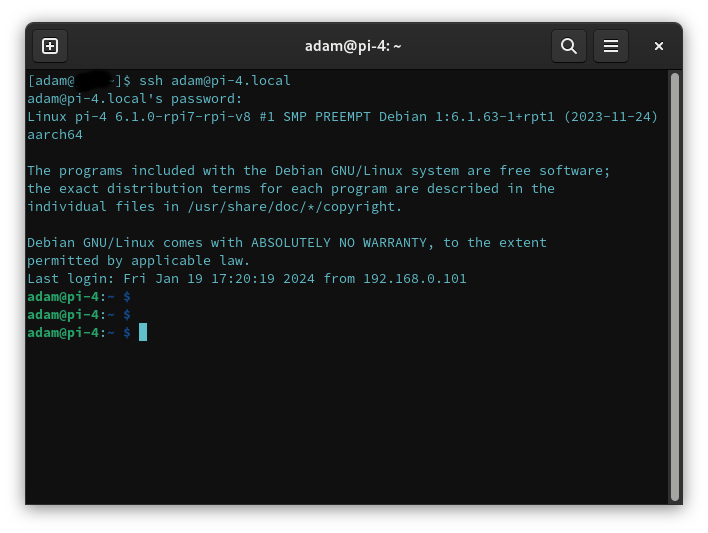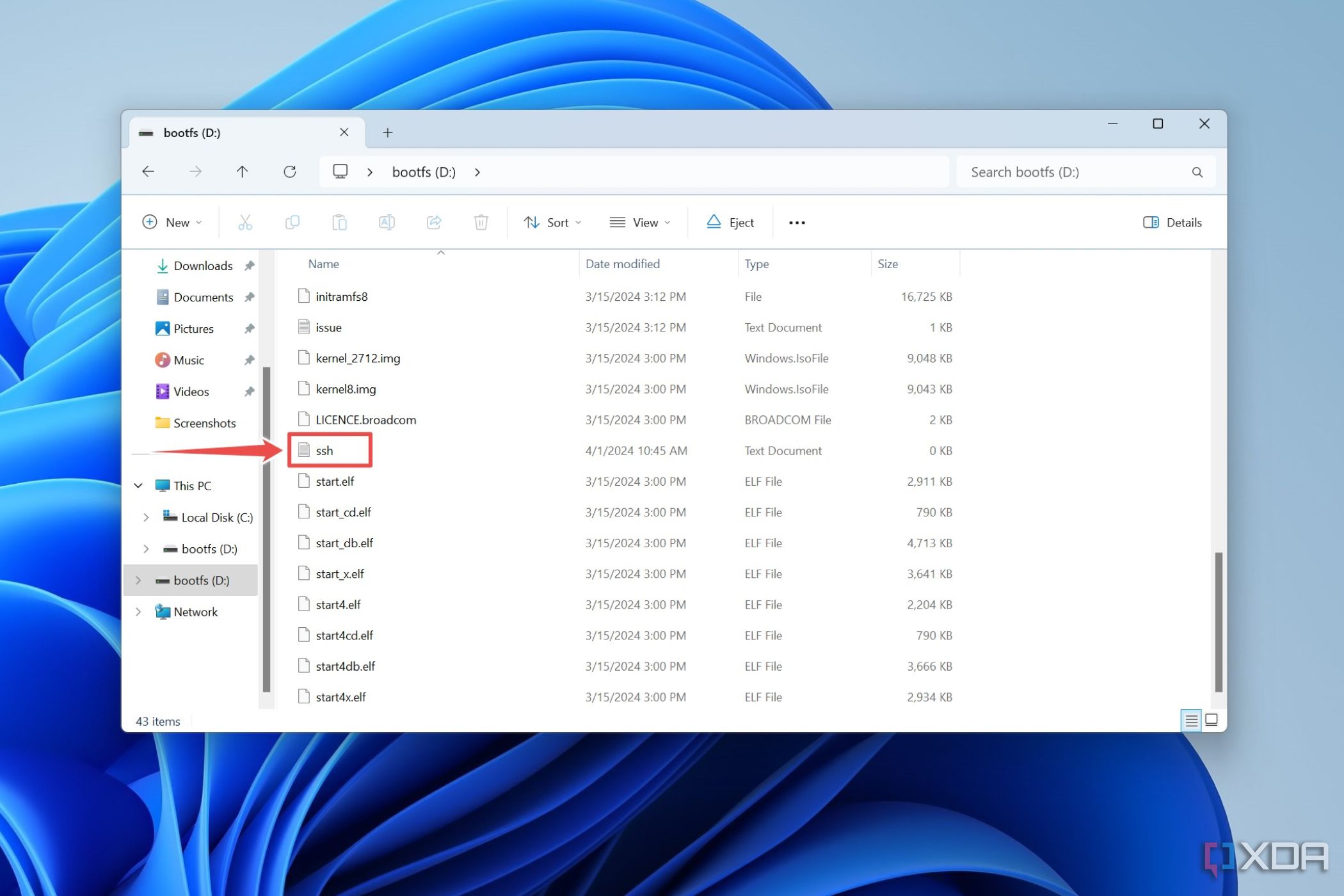Mastering SSH Remote IoT With Raspberry Pi: The Ultimate Guide
SSH Remote IoT with Raspberry Pi is not just a buzzword; it's a game-changer for tech enthusiasts and professionals alike. Imagine controlling your smart home devices or automating industrial processes from the comfort of your couch. Sounds cool, right? Well, buckle up because this article dives deep into the world of SSH and how it can transform your IoT projects using Raspberry Pi. Whether you're a beginner or an advanced user, this guide has got you covered.
In today's fast-paced world, remote access and control have become essential tools for innovation. From monitoring environmental conditions to managing complex networks, SSH plays a crucial role in making these tasks seamless. But what exactly is SSH, and how does it work with IoT devices like Raspberry Pi? Stick around as we unravel the mysteries behind this powerful technology.
Before we dive into the nitty-gritty, let's address the elephant in the room: why should you care about SSH Remote IoT with Raspberry Pi? The answer is simple yet profound. By mastering this skill, you open doors to endless possibilities, from automating mundane tasks to building cutting-edge solutions. So, are you ready to level up your tech game? Let's get started!
Read also:Is Barron Trump Athletic Exploring The Young Trumps Active Side
What is SSH and Why Does It Matter?
SSH stands for Secure Shell, and it’s basically the superhero of remote communication. Think of it as a secure tunnel that lets you access and control computers or devices from anywhere in the world. Unlike other protocols that leave your data exposed, SSH encrypts everything, ensuring your information stays safe from prying eyes.
Now, why does SSH matter in the realm of IoT? Well, IoT devices are everywhere these days, from smart thermostats to autonomous drones. With SSH, you can manage these devices remotely, troubleshoot issues, and even deploy software updates without physically being there. It’s like having a remote control for your entire tech ecosystem.
How SSH Works with Raspberry Pi
Raspberry Pi is like the Swiss Army knife of single-board computers, and when paired with SSH, it becomes unstoppable. By enabling SSH on your Raspberry Pi, you can connect to it from any device with an internet connection. This is particularly useful if your Raspberry Pi is set up as a server or a gateway for your IoT devices.
- SSH creates a secure connection between your local device and the Raspberry Pi.
- Data transmitted over this connection is encrypted, ensuring privacy and security.
- You can execute commands, transfer files, and even manage services remotely.
For instance, imagine you're at work, but you need to check the temperature readings from a sensor connected to your Raspberry Pi at home. With SSH, you can log in, run the necessary commands, and get the data you need in no time.
Setting Up SSH on Your Raspberry Pi
Setting up SSH on your Raspberry Pi is easier than you think. Whether you're using the latest Raspberry Pi OS or an older version, the process remains pretty straightforward. Here's a step-by-step guide to help you get started:
First things first, make sure your Raspberry Pi is up and running. If you haven't already, install the latest version of Raspberry Pi OS. Once that's done, follow these steps:
Read also:Nancy Shevell A Woman Of Substance And Success
- Open the terminal on your Raspberry Pi. You can do this by clicking on the terminal icon or pressing
Ctrl + Alt + T. - Type the following command to enable SSH:
sudo raspi-config. - Navigate to the "Interfacing Options" menu and select "SSH".
- Choose "Yes" when prompted to enable SSH and hit "Ok".
- Reboot your Raspberry Pi by typing
sudo reboot.
Voila! You've successfully enabled SSH on your Raspberry Pi. But wait, there's more. To connect to your Raspberry Pi remotely, you'll need its IP address. You can find this by typing hostname -I in the terminal.
Troubleshooting Common SSH Issues
Let's face it, things don't always go as planned. If you're having trouble connecting to your Raspberry Pi via SSH, don't panic. Here are a few common issues and how to fix them:
- Connection Refused: Double-check your Raspberry Pi's IP address and ensure SSH is enabled.
- Authentication Failed: Make sure you're using the correct username and password. By default, the username is "pi" and the password is "raspberry".
- Timeout Error: This could be due to a network issue. Ensure both your local device and Raspberry Pi are connected to the same network.
Still stuck? Don't hesitate to reach out to the Raspberry Pi community or consult the official documentation for more assistance.
Connecting to Your Raspberry Pi Remotely
Now that SSH is enabled on your Raspberry Pi, it's time to connect to it remotely. Depending on your operating system, the process might vary slightly, but the core concept remains the same. Here's how you can do it on different platforms:
Connecting from a Windows PC
If you're using a Windows machine, you'll need an SSH client like PuTTY. Download and install PuTTY, then follow these steps:
- Launch PuTTY and enter your Raspberry Pi's IP address in the "Host Name" field.
- Select "SSH" as the connection type.
- Click "Open" to establish the connection.
- When prompted, enter the username ("pi") and password ("raspberry").
That's it! You're now connected to your Raspberry Pi via SSH.
Connecting from a Mac or Linux Machine
Mac and Linux users have it even easier since SSH is built into the terminal. Simply open the terminal and type:
ssh pi@your_raspberry_pi_ip_address
Replace "your_raspberry_pi_ip_address" with the actual IP address of your Raspberry Pi. Hit enter, enter the password when prompted, and you're good to go.
Securing Your SSH Connection
Security should always be a top priority, especially when dealing with remote access. While SSH is inherently secure, there are additional steps you can take to fortify your connection:
- Change the Default Password: The default password "raspberry" is well-known, so it's a good idea to change it to something more complex.
- Disable Password Authentication: Use SSH keys instead of passwords for added security.
- Update Regularly: Keep your Raspberry Pi's software up to date to patch any security vulnerabilities.
By implementing these measures, you can rest assured that your SSH connection is as secure as it can be.
Generating SSH Keys for Raspberry Pi
SSH keys are like digital passports that allow you to log in without entering a password every time. Here's how you can generate and use SSH keys with your Raspberry Pi:
- On your local machine, open the terminal and type:
ssh-keygen. - Follow the prompts to create your key pair. You can press enter to accept the default settings.
- Copy the public key to your Raspberry Pi by running:
ssh-copy-id pi@your_raspberry_pi_ip_address. - Test the connection by typing:
ssh pi@your_raspberry_pi_ip_address. You should now be able to log in without entering a password.
SSH keys not only enhance security but also make logging in a breeze.
SSH Remote IoT Applications with Raspberry Pi
The possibilities with SSH Remote IoT and Raspberry Pi are virtually limitless. Here are a few exciting applications to spark your imagination:
- Smart Home Automation: Control lights, thermostats, and security systems from anywhere.
- Remote Monitoring: Keep an eye on environmental conditions like temperature, humidity, and air quality.
- Industrial IoT: Manage factory equipment and optimize production processes.
Each of these applications leverages the power of SSH to provide seamless remote access and control, making them invaluable in today's interconnected world.
Building a Smart Home with Raspberry Pi
Let's take a closer look at how you can use SSH Remote IoT with Raspberry Pi to build a smart home. Here's a simplified overview:
- Set up your Raspberry Pi as a central hub for all your smart devices.
- Connect sensors and actuators to your Raspberry Pi using GPIO pins.
- Write scripts or use existing software to automate tasks like turning lights on/off based on motion detection.
- Use SSH to monitor and control your smart home remotely.
With a bit of creativity and some coding skills, you can transform your house into a smart home oasis.
Best Practices for SSH Remote IoT with Raspberry Pi
As with any technology, there are best practices to follow when working with SSH Remote IoT and Raspberry Pi. Here are a few tips to help you get the most out of your setup:
- Document Everything: Keep a record of your SSH configurations, IP addresses, and any scripts you write.
- Backup Regularly: Store backups of your Raspberry Pi's SD card to prevent data loss.
- Stay Updated: Follow the latest developments in SSH and IoT to ensure your setup remains cutting-edge.
By adhering to these best practices, you can ensure a smooth and successful experience with SSH Remote IoT on your Raspberry Pi.
Staying Updated with the Latest Trends
The world of IoT is constantly evolving, and staying informed is key to staying ahead. Follow reputable tech blogs, join online communities, and attend webinars to keep up with the latest trends and innovations. Who knows, you might even discover the next big thing in IoT!
Conclusion
In conclusion, SSH Remote IoT with Raspberry Pi offers endless opportunities for innovation and creativity. From automating your smart home to managing industrial processes, the possibilities are truly limitless. By following the steps outlined in this guide, you can harness the full potential of SSH and take your IoT projects to the next level.
So, what are you waiting for? Dive in, experiment, and let your imagination run wild. And don't forget to share your experiences and creations with the world. The tech community thrives on collaboration and knowledge-sharing, so your contributions could inspire others to embark on their own SSH Remote IoT adventures.
Until next time, happy tinkering and keep pushing the boundaries of what's possible!
Table of Contents
- What is SSH and Why Does It Matter?
- How SSH Works with Raspberry Pi
- Setting Up SSH on Your Raspberry Pi
- Troubleshooting Common SSH Issues
- Connecting to Your Raspberry Pi Remotely
- Securing Your SSH Connection
- Generating SSH Keys for Raspberry Pi
- SSH Remote IoT Applications with Raspberry Pi
- Building a Smart Home with Raspberry Pi
- Best Practices for SSH Remote IoT with Raspberry Pi
- Staying Updated with the Latest Trends
- Conclusion


